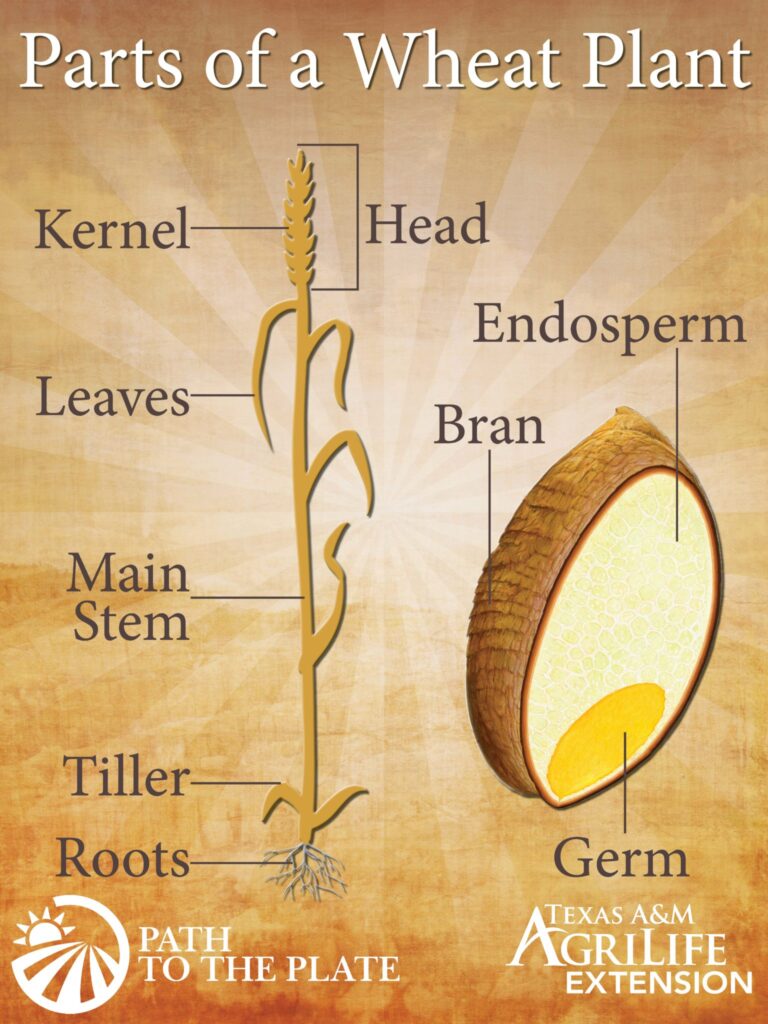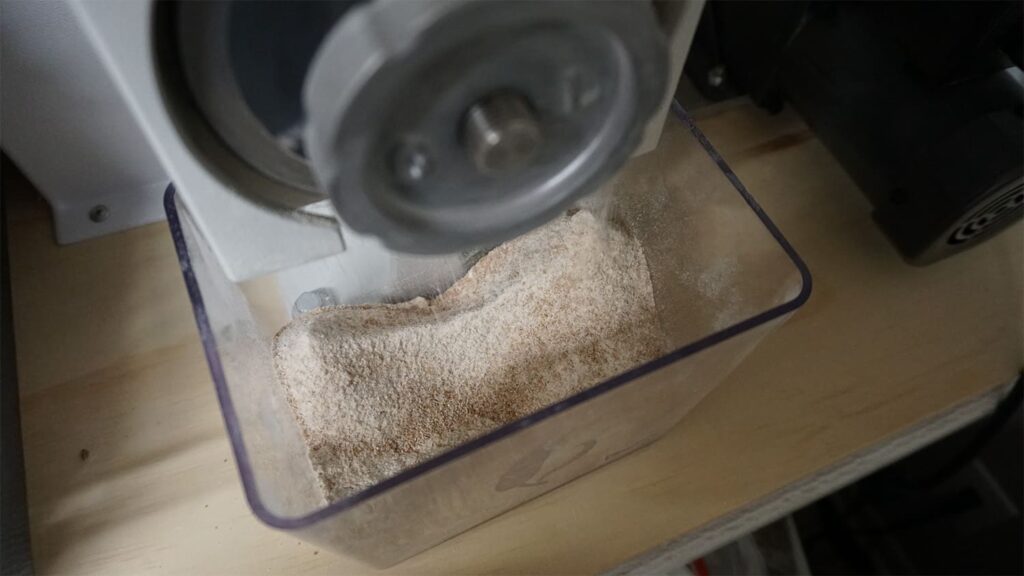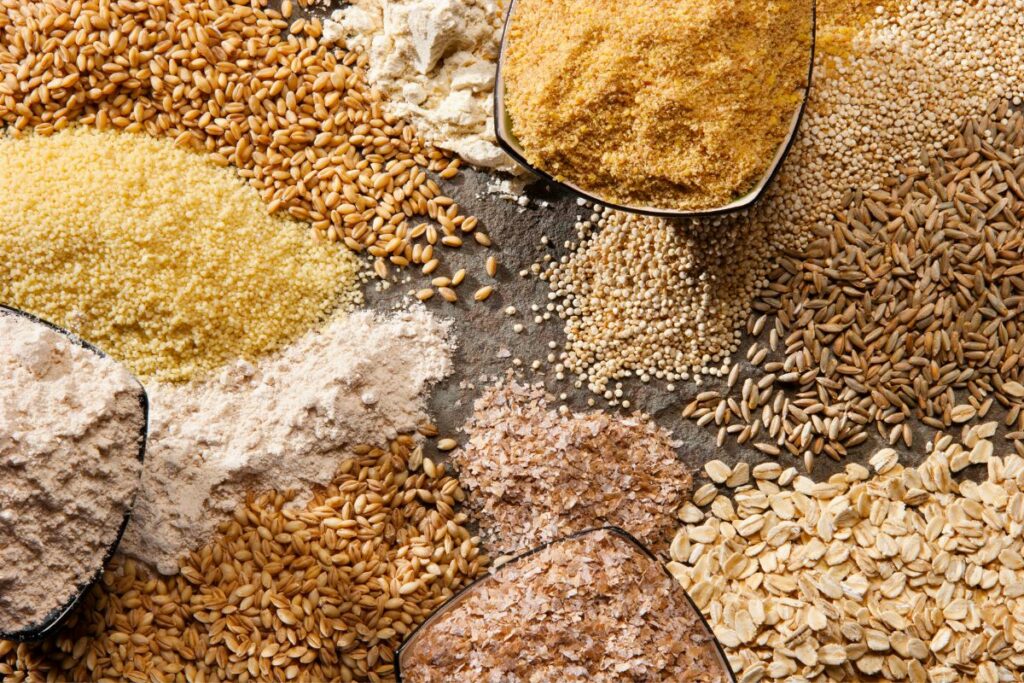These days people are making more of an effort to keep stay fit and healthy, and often the first step is eating well.
But with so many rules for the perfect “healthy” diet out there, it can get pretty confusing trying to work out what to add and take away from your diet. “Healthy” is such a loaded word as it can look different from one person to the next.
I’ve been told I’m supposed to eat at least five servings of fruits and vegetables a day, but what about whole grains? What counts as a serving of whole grains? What counts as a whole grain?
As the one who is in charge of grocery shopping, meal planning, and most of the cooking for my family, I needed to figure it out. I’ll share with you where I landed and why, and hopefully it will help YOU figure out what is best for you and your family!
Whole grain daily serving recommendations
Consuming the appropriate amount of grains and foods made with grains for you is dependent on many factors, including your age, gender, what health problems you already have, and level of physical activity.
The government, via MyPlate.gov, recommends that adults in the United States consume 6 to 10 “ounce equivalents” of whole grains on a daily basis.
This means 6 to 10 servings with 1 serving being something like:
- 1 slice of bread
- ½ cup of cooked rice, cooked pasta, or cooked cereal
| MyPlate.gov daily recommendations | |||
|---|---|---|---|
| Total Grains in ounce-equivalents | Whole Grains in ounce-equivalents | ||
| Toddlers | 12 to 23 months | 1¾ to 3 oz-equiv | 1½ to 2 oz-equiv |
| Children | 2-3 yrs 4-8 yrs | 3 to 5 oz-equiv 4 to 6 oz-equiv | 1½ to 3 oz-equiv 2 to 3 oz-equiv |
| Girls | 9-13 yrs 14-18 yrs | 5 to 7 oz-equiv 6 to 8 oz-equiv | 2½ to 3½ oz-equiv 3 to 4 oz-equiv |
| Boys | 9-13 yrs 14-18 yrs | 5 to 9 oz-equiv 6 to 10 oz-equiv | 3 to 4½ oz-equiv 3 to 5 oz-equiv |
| Women | 19-30 yrs 31-59 yrs 60+ yrs | 6 to 8 oz-equiv 5 to 7 oz-equiv 5 to 7 oz-equiv | 3 to 4 oz-equiv 3 to 3½ oz-equiv 3 to 3½ oz-equiv |
| Men | 19-30 yrs 31-59 yrs 60+ yrs | 8 to 10 oz-equiv 7 to 10 oz-equiv 6 to 9 oz-equiv | 4 to 5 oz-equiv 3½ to 5 oz-equiv 3 to 4½ oz-equiv |
I’m a 41-year-old woman so I would need to eat 5-7 slices of bread or 3-ish cups of rice a day to meet this requirement.
They are saying that one grain-based product, such as one slice of bread, is equivalent to around 28g (1 ounce). However, many grain-based foods we eat are more than the “recommended ounce equivalent” which can make things more complicated than they need to be.
For example:
One bagel = 4 ounce-equivalent portions = 112g = 2/3 of my recommended whole grains
So I can eat one bagel and think that I’m eating “one serving” but in fact, I’m eating four servings of whole grains and almost two-thirds of my recommended daily allowance.
What does this mean? Unfortunately, American’s are not only getting way more whole grains than recommended, typically they are not truly “whole grains” but are instead highly-processed grains which remove the most nutritious part of the grain (the bran and germ), leaving only the endosperm.
You can read more here, where I dive into the problem of modern day grains and what you can do to eat healthy, whole grains.
All about grains
Grains can include pseudo-grains, which are typically seeds that act like grains, or in true grains, like wheat. Wheat, which is a grass, is grown and left to dry, then is cut and threshed to remove the grain from the hull. We then mill the grain, also called a berry, to make flour.

The bran, the germ, and the endosperm are the three components that make up a grain in its whole form, and each of these parts can give you a variety of health benefits.
The endosperm
The endosperm is the most abundant portion of the kernel and is responsible for supplying the germ with nutrients.
The majority of its composition is made up of starchy carbs, and it also has a trace amount of protein and various vitamins and minerals.
The germ
The minuscule inner seed, also known as the embryo, is a rich source of vitamin E, vitamin B, minerals, and healthy fats. This seed has the potential to develop into a new plant.
The bran
The outer layer of the kernel, known as the bran, shields the kernel from damage caused by sunshine, insects, moisture, and disease.
This portion can be consumed and provides the body with essential antioxidants, B vitamins, iron, copper, zinc, and magnesium as well as phytonutrients and fiber.
Anything that is manufactured from wheat, rice, oats, cornmeal, barley, or any cereal grain is considered to be a grain-based food (click here to learn about cereal grains). Examples of grain-based foods include bread goods, crackers, cakes, bagels, tortillas, and grits.
In general, carbohydrates are defined as grains and foods based on grains; however, grains and grain-based foods can also contain traces of fat and protein.
Whole grains

Whole grains are the original form of every grain. Whole grain foods are products that have been produced from grains that have been processed in such a way that the grain kernels have not been broken up into smaller pieces.
Whole grain products are made with 100% whole grain flour, so the endosperm, bran, and germ are not removed after milling. All-purpose or white flour is made up of just the endosperm, extending it’s shelf-life and making the flour much less-dense.
You can read more about why “brown bread” at the grocery store is not always whole grain here.
When studies talk about a lower risk of disease and mortality due to whole grains, remember that they are talking about 100% whole grains, not the vast majority of breads you get at the grocery store, which are typically made from flour with the bran and germ removed.
Health benefits
Studies have indicated that increasing the levels of whole grains in your diet is associated not just with a reduction in overall body weight but also with a reduction in the low-grade inflammation that occurs throughout the body.
The bran, germ, and endosperm are all components of whole grains. The consumption of whole grains is associated with an increase in dietary fiber, iron, magnesium, and many different B vitamins.
Refined grains
Grains are considered refined once they have been milled or otherwise processed to remove the heavy bran and germ components.
The end product is a dish that has a finer texture and, as a result, may have a greater visual appeal to more customers. Additionally, the shelf life of these meals is typically extended.
Health benefits
Compared to the health benefits of whole grains, refined grains just cannot keep up.
During the milling process of refined grains, the portion of the kernel that is responsible for providing dietary fiber, iron, and B vitamins, in addition to some minerals and phytonutrients, is removed.
Because of this, refined grains are far less healthy and good for you than whole grain products.
So, how many whole grains SHOULD you eat every day?
This is a personal choice, but in our family, we tend to limit the amount of grains to one dish a day. This can look like:
- 2 Spelt tortillas served with dinner
- 2 Biscuits with butter and jam for breakfast
- 1-Slice of sourdough bread with breakfast
- 1-Cup of rice with dinner
I love bread and grains (duh! I have a whole website dedicated to it!) but prioritize vegetables, fats, and proteins in our diet first, with complex carbohydrates from 100% whole grains last.
Hope that helps you in your own journey to find what is best for you and your family!








